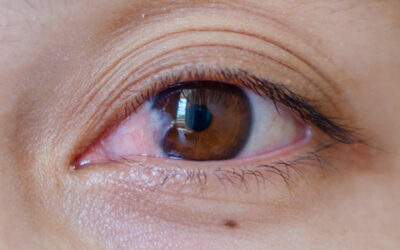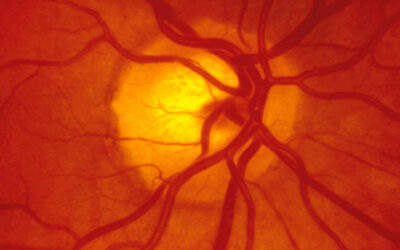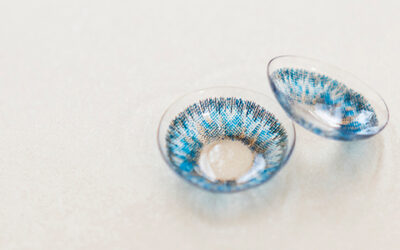The Link Between Rheumatoid Arthritis and Dry Eye
While many of us associate rheumatoid arthritis with painful, swollen joints, the effects of rheumatoid arthritis can lead to a range of complications across your body systems, including your connective tissues, skin and muscles, and the eyes are no exception.
Dry eyes, a condition that can leave your eyes feeling scratchy, sore, stinging and sensitive to light, is the most common eye complication of rheumatoid arthritis [1], and up to 44% of all individuals with rheumatoid arthritis will experience it at some point.[2]
In some cases, chronic dry eye can result in damage to your cornea, the surface of your eye and vision loss over time, which is why our eye care professionals recommend that everyone with rheumatoid arthritis have a comprehensive eye examination at least once a year, as early detection and treatment can make a significant difference in protecting your vision.
So what are dry eyes, how can rheumatoid arthritis impact the eyes, and what treatment options are there to protect your eye health? Let’s take a closer look.
How Dry Eyes Develop: A Background Look
Every time you blink and close your eyelids, a thin tear spreads across your eye’s cornea or surface. This thin tear that covers your eyes is known as the tear film.
Anything that interferes with this tear film may lead to dry eyes, as your tear film protects and nourishes the cornea beneath, keeps your eyes lubricated, and helps clean away anything that gets in the eye.
Your tear film comprises three layers: oil, water, and mucous. The outer oil layer is produced by small glands on the edge of your eyelids, where your eyelashes are located. This oil helps prevent the water layer from evaporating from your eyes, while the mucous layer helps to spread the tears evenly over the eye’s surface.
Dry eyes can develop if there are disruptions or damage to these tear film layers: your eyes may be dry from either not producing enough tears as part of the tear film, or a clogged gland may mean that your eyes do not produce enough oil which can result in dry eyes as your tears evaporate faster than normal.
How Can Rheumatoid Arthritis Affect The Eyes?
Rheumatoid arthritis is an autoimmune disease, which means the body’s immune system mistakenly attacks healthy tissue, such as the connective tissues within joints, causing swelling, pain and inflammation.
The connective tissue within our joints contains collagen. Occasionally, the body may also attack other tissues within our eyes which contain collagen, including the sclera, or white of the eye, the cornea, and the parts of your eyes responsible for producing tears.
As a result, people with rheumatoid arthritis are more prone to developing a range of eye conditions, including:
- Dry Eyes: Antibodies from rheumatoid arthritis can attach the parts of the eyes responsible for producing tears. This can result in dry eye symptoms such as red, burning, gritty, painful or itchy eyes, blurred vision, feeling like something is stuck in your eye, very watery eyes as your eyes try to compensate, discomfort when wearing contact lenses, and stringy mucus around your eyes. Dry eyes are also more susceptible to developing infections.
- Scleritis: Scleritis is inflammation of the sclera or the whites of the eyes. Up to 15% of all cases of scleritis are caused by rheumatoid arthritis,[3] which can result in pain, redness, sensitivity to light, and in some cases, vision loss if not treated promptly.
- Keratitis: Keratitis is inflammation of the cornea, the clear layer at the eye’s front surface. Keratitis can also result in pain, redness, sensitivity to light and scarring or vision loss if not treated promptly.
- Uveitis: Uveitis is inflammation of the middle layer of the eye, which can result in red eyes, blurred vision, sensitivity to light, and sudden floaters or small spotty dark objects in a person’s vision. Uveitis also requires prompt treatment to avoid complications.
Certain medications for autoimmune diseases may affect the eyes. An optometrist can assess this regularly.
What About Sjögren’s Syndrome?
Between 10 and 30% of all individuals with rheumatoid arthritis also have Sjögren’s syndrome, another autoimmune condition that affects the glands in the body responsible for producing moisture, including the mouth, skin, joints and eyes, meaning they are less lubricated and become dry and painful.
For people with both rheumatoid arthritis and Sjögren’s syndrome, dry eyes can be particularly common and bothersome, and you may have difficulties elsewhere, too, including a dry mouth, difficulty swallowing, and cracked skin.
Home Treatment For Rheumatoid-Arthritis-Related Dry Eyes
Chronic dry eye can result in corneal damage and vision loss over time, so if you have rheumatoid arthritis, annual eye exams with a qualified optometrist are a key part of managing your eye health. With targeted support and treatments to manage inflammation, patients with rheumatoid arthritis are much less likely to develop complications.
Our experienced optometrists can support you with lifestyle changes and prescribe eye drops or other necessary treatments.
Alongside regular appointments with an experienced optometrist, other strategies you can put in place at home to relieve dry eyes include:
Warm compresses: Warm compresses are proven to help your eyes produce more tears and unclog blocked glands, releasing moisturising oils back into your eyelid.[4],[5] They are very effective, with studies showing an 80% increase in the thickness of the oily layer over the eye in just five minutes and an additional 20% increase after 15 minutes.[6]
Reduce screen time: People who use computers for extended periods have been found to have a much higher rate of dry eyes[7] and other troublesome visual symptoms, such as eye strain, headaches and blurred vision.[8] If you work at the computer or stare at digital devices like smartphones or televisions for long periods, you may be blinking as little as 7 times per minute compared to the standard 22 times per minute.[9] Try using the 20/20 rule – every 20 minutes, close your eyes for 20 seconds.
Eat more Omega-3s: Research has confirmed that taking omega-3 fatty acid supplements may significantly improve the uncomfortable symptoms of dry eyes [10] by helping to stimulate more tears and to increase the eye’s production of oil from the meibomian glands, which lubricates your eyes and prevents the natural tears from evaporating. Omega-3 fatty acids are naturally found in fish such as salmon, herring, sardines, squid, scallops and mussels. Plant-sourced omega-3s are found in walnuts, linseed/flaxseed, chia seeds and oils such as canola and soybean.
Drink the recommended 8 glasses of water per day.
Protect your eyes: Dry air, wind, dust, sunlight and air conditioning can contribute significantly to the symptoms of dry eyes, so managing these factors to the best of our ability may help reduce and prevent eye dryness. If the air is particularly dry, like in the winter months, consider using a humidifier to improve the air moisture at home, and avoid sitting near air conditioners and fans if you can.
Keep your eyes closed when using hair dryers. Wear protective wraparound sunglasses when it’s sunny or windy outside to protect your eyes against UV exposure damage and decrease the chance of dust or debris entering your eye.
Is It Time To Visit An Optometrist?
At-home remedies can alleviate mild and temporary cases of dry eyes, but for those with rheumatoid arthritis, annual eye exams with a qualified optometrist are a key part of managing your eye health, detecting other conditions such as uveitis and keratitis, and picking up on and any changes that may arise over time.
Chronic dry eye can result in complications such as corneal scarring and vision loss, so it’s important to have an annual eye exam with one of our experienced optometrists, who can assess your eye health to monitor changes and get you started on effective treatment promptly.
While dry eyes can be caused by rheumatoid arthritis, they can also be exacerbated by other factors such as aging, hormonal changes, and some medications such as certain antihistamines, antidepressants and blood pressure medications.
At The Optical Co, our friendly optometrists take a holistic approach to your eye health. Every treatment plan is designed uniquely for your needs and preferences to help optimise your quality of life. Our optometrists can also refer you to an ophthalmologist, or eye doctor specialising in surgery, for more complex treatment, if needed.
If you have rheumatoid arthritis or dry eye symptoms that are bothering you, book an appointment at a nearby clinic.
[1] https://www.aao.org/eyenet/article/ocular-involvement-in-rheumatoid-arthritis
[2] https://iovs.arvojournals.org/article.aspx?articleid=2334381
[3] https://pubmed.ncbi.nlm.nih.gov/34068884/
[4] https://pubmed.ncbi.nlm.nih.gov/12695712/
[5] https://pubmed.ncbi.nlm.nih.gov/24270634/
[6] https://pubmed.ncbi.nlm.nih.gov/12695712/
[7] https://pubmed.ncbi.nlm.nih.gov/18708259/
[8] https://pubmed.ncbi.nlm.nih.gov/21480937/
[9] https://pubmed.ncbi.nlm.nih.gov/8426634/
[10] https://pubmed.ncbi.nlm.nih.gov/30702470/




